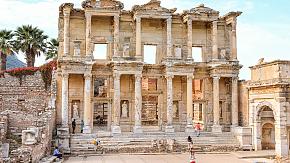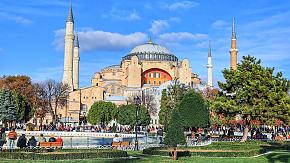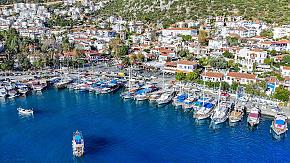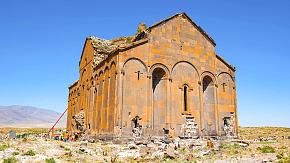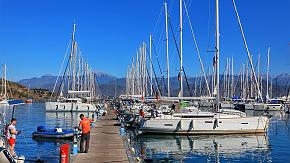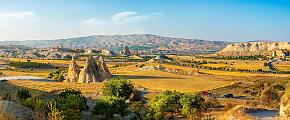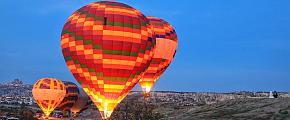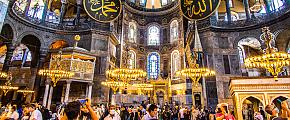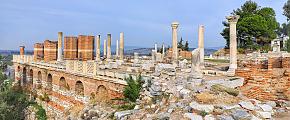Turkey Currency Guide: Things to Know About Turkish Lira
Before you take a Turkey tour, it is a good idea for you to know something about the local currency. Understanding the Turkish currency not only facilitates convenient transactions but also helps you make informed choices regarding payment methods and exchange rates, so you can spend your money wisely during your travel experience. This article provides you with a guide to Turkish currency, including its types, exchange rates, methods of payment, and useful tips for handling cash.
What is Turkish Currency
In Turkey, the official currency is the Turkish lira (TRY). The Turkish lira is further divided into banknotes and coins. Banknotes are available in denominations of 5, 10, 20, 50, 100, and 200 lira, while coins are available in denominations of 1, 5, 10, 25, and 50 kurus, as well as 1 lira. 1 lira equal to 100 kurus. Exchange rates in Turkey can vary, and it is advisable to check the rates before converting currency.
Currency Conversion
Banks, exchange offices, and ATMs are common places to convert currency in Turkey. You are also able to exchange money before your departure. However, it is recommended that you avoid changing large sums of money in your home country's airport as commission rates are heavy. It is also advisable that you change a small amount at the Turkish airport for your expenses early on in the trip and then change larger sums of money when you enter the city you intend to stay at.
Bank
Banks located in large shopping centers and in the downtown areas, such as the Fatih district in Istanbul, usually offer competitive rates (usually the best rates found in banks), but they may have limited operating hours (usually 9:00 - 17:30).
Exchange office
Exchange offices are also widely available, usually located around tourist attraction areas such as Sultanahmet District, Taksim Square, and the Fatih District in Istanbul. especially around tourist attraction areas and often have longer operating hours (9:00 - 18:30/or later depending on the office). You are also able to find exchange offices in shopping malls around the city. Rates at exchange offices also vary, so you are advised to check the rates at more than one office to determine which office is the best option.
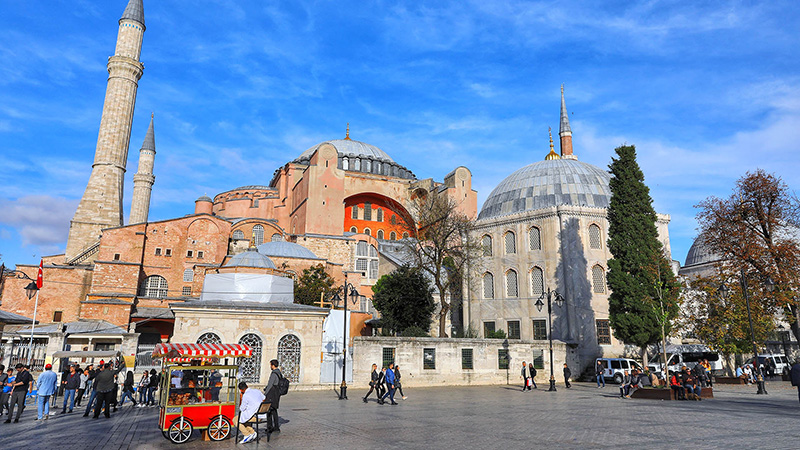 Hagia Sophia in Faith District, Istanbul
Hagia Sophia in Faith District, Istanbul
ATM
ATMs are convenient and available across the country and open 24/7. Most accept foreign cards such as Visa and Mastercard. You can find ATMs near banks, shopping centers, airports, metro stations, and tourist areas. An ATM machine is known as "Bankamatik" in Turkish, and is important to note that you are only able to withdraw Turkish lira but be aware that every bank has designated associated handling fees. Handling fees are often 1% ~ 3 %.
Paying in Turkey
1. By Cash
It is recommended to carry some Turkish lira for small transactions and places where cards may not be accepted. Mini roadside Cafes, small eateries, street food, and tea houses are usually cash-only. For example, the shopping destination of Grand Bazaar is mostly cash-only. It is advisable to keep a small pouch for coins to ensure convenience. Coins are mainly used for small transactions, such as when buying your token for the metro or when purchasing from street vendors, as they usually only accept cash, and as the amounts are usually minimal, coins are best for change.
2. By Credit Cards
Credit cards are widely accepted in major cities and tourist areas in Turkey. Credit cards can be used at larger dining establishments, tourist attractions, taxi apps, etc. Visa and MasterCard are generally accepted, while American Express, Discover, and Diners Club may have more limited acceptance. Therefore, if you are a holder of these three cards, make sure to check in with the staff before you sit for your meal or make a purchase. For foreign transaction fees, the fee typically is a percentage of the transaction amount ranging from 1-3%, but it's always best to check with your credit card provider policy. It is advisable to inform your credit card provider about your travel plans to avoid any potential issues.
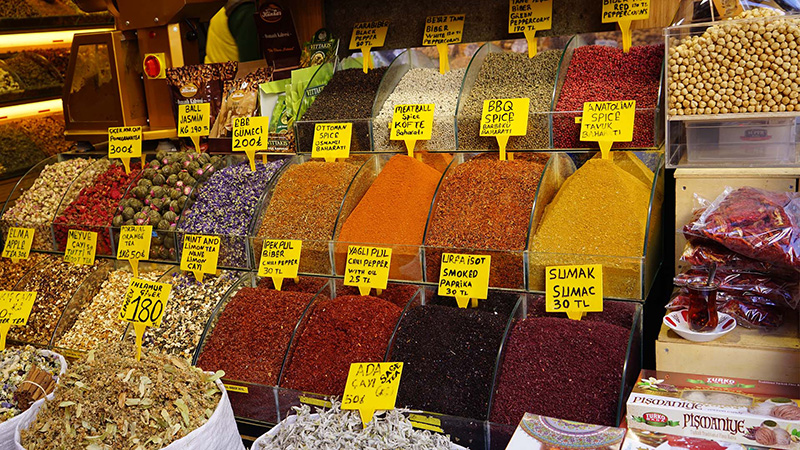 Mostly Cash-only in Grand Bazaar
Mostly Cash-only in Grand Bazaar
3. By USD or Euro
While the official currency is the Turkish lira, some establishments in tourist areas may accept US dollars or euros. Euros are widely used by merchants and are commonly known to locals in western Turkey. USD is mostly accepted in tourist attractions and luxury brands. Although both currencies are accepted in some areas, it is not a good idea to use them as your main source of pay in Turkey, so make sure to ask if it is accepted before you pay. To avoid unnecessary monetary losses due to unreliable exchange rates, it is recommended to use the Turkish currency for most of your purchases.
Tipping Culture
Tipping is customary in Turkey. It is recommended to tip around 5- 10% of the bill in restaurants, cafes and bars. As for hotels, you can tip about 2-3 Euros to the hotel porter, and if you were really impressed or enjoyed the service the hotel provided, you may tip 10 Euros at check-out. However, it is not necessary. You can also tip your tour guides in appreciation for an exceptional job, and the amount can be anything you find acceptable.
Notice the Old Turkish Lira
Notes older than 2005 are usually not accepted. It was replaced by the new currency where 1 new lira = 1.000.000 old lira. The banknotes you should be using have denominations of 5, 10, 20, 50, 100, and 200 lira, and there should not be an extra 6 zeros, such as 10.000.000.
Make sure you pay close attention to the currency denomination and don’t accept any old lira when collecting change from others, also Remember to not use any old lira when shopping as no one will accept it as the current currency, finally When you are exchanging money, be careful not to receive old lira.
Tips for using Turkey Lira
- Carrying a small pouch for coins or change can be convenient for daily transactions such as small purchases, metro, etc.
- Always exchange money either in the bank or exchange offices to avoid being handed fake notes.
-The best way to tell the difference between real and fake money is to hold up the banknote to a light source to check for watermarks. On real banknotes, you should see a watermark of the portrait featured on the front of the note. The watermark should be clearly visible and has a 3D effect. Also, real banknotes are printed on high-quality paper, and the texture should be rough, crisp, and firm. While counterfeit notes are smoother in comparison.
- It is advisable to avoid displaying large sums of money in public to avoid being targeted for theft or potential scams. Also, be mindful of your surroundings, especially in crowded areas, and make sure to check your purse every now and then to ensure everything is secure, as tourist areas can get a bit crowded during the high holiday season.
Understanding the Turkish currency is crucial for your visit to Turkey. This guide provides you with an overview of the Turkish currency, its types, exchange rates, methods of payment, and useful tips for handling cash. By being familiar with the Turkish currency, you can navigate financial transactions with ease, make informed choices, and fully enjoy your visit to this beautiful country. Travel with Odynovo to enjoy Turkey with all it has to offer. If you would like to know more about Turkey, contact our team to find out more.
Related Posts You May Like
What Our Clients Say
Explore the latest verified reviews of Odynovo's travel services on Tripadvisor, Google, Trustpilot, Product Review and more trusted platforms.


